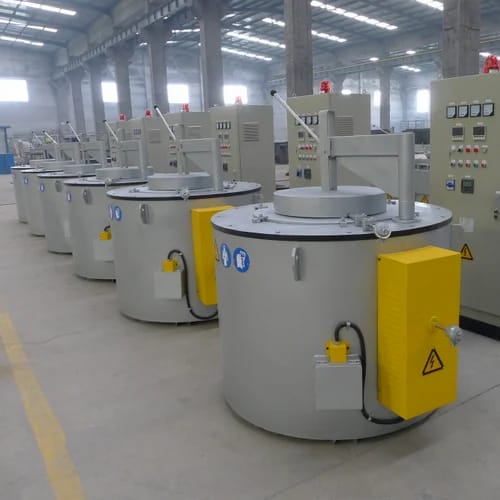HOLDING FURNACES

Holding Furnaces are specialized furnaces designed to maintain molten metal at a consistent temperature for extended periods, typically used in foundries and metalworking industries. Their primary function is not to melt the metal but to keep it in a molten state after it has been melted in another furnace. These furnaces ensure that the molten metal remains at the desired temperature before it is poured into molds or used for further processing.
Types of Holding Furnaces
-
Electric Holding Furnaces
- Function: Uses electric heating elements to maintain the molten metal at a stable temperature. These furnaces are ideal for non-ferrous metals like aluminum and copper.
- Features: Offers precise temperature control, energy efficiency, and minimal metal contamination.
-
Gas-Fired Holding Furnaces
- Function: Burns natural gas or other fuels to maintain a consistent heat source for holding molten metal. Commonly used for aluminum, zinc, and brass.
- Features: Simple to operate, cost-effective, and can accommodate large batches of molten metal.
-
Induction Holding Furnaces
- Function: Uses electromagnetic induction to keep molten metal hot. Induction furnaces provide fast heating and temperature stability.
- Features: Highly energy-efficient, precise temperature control, and minimal oxidation of metal.
-
Crucible Holding Furnaces
- Function: Small, portable units that use either gas or electricity to maintain molten metal for small-scale operations. Often used for precious metals or small foundry processes.
- Features: Simple design, ideal for smaller batches, and provides effective temperature control.
-
Cupola Holding Furnaces
- Function: Primarily used in iron foundries, cupola furnaces are used for holding molten iron at high temperatures before pouring it into molds.
- Features: Traditionally fueled by coke or coal, offering high thermal efficiency and large holding capacities.
